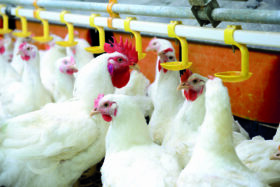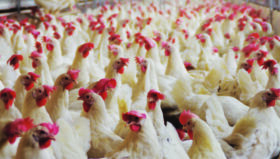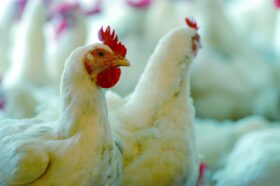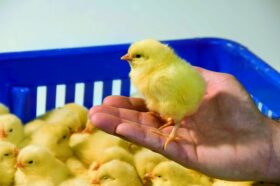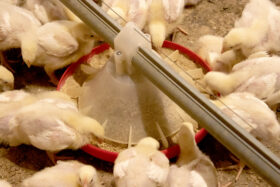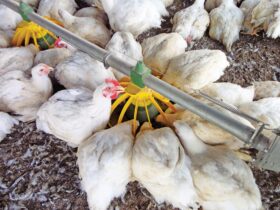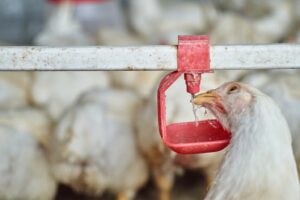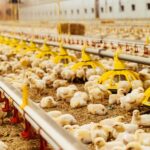By Technical Team, EW Nutrition
Secondary plant extracts have been shown to improve digestion, have positive effects on intestinal health, and offer protection against oxidative stress in various scientific studies in recent years. Their use as a feed additive has become established and various mixtures, adapted to the various objectives, are widely available.
However, their use in pelleted feed has been criticized for some time. In particular, an unsatisfactory reproducibility of the positive influences on performance parameters is the focus of criticism. The causes invoked for the loss of quantifiable benefits are inadequately standardized raw materials, as well as uncontrollable and uneven losses of the valuable phytomolecules contained during compound feed production.
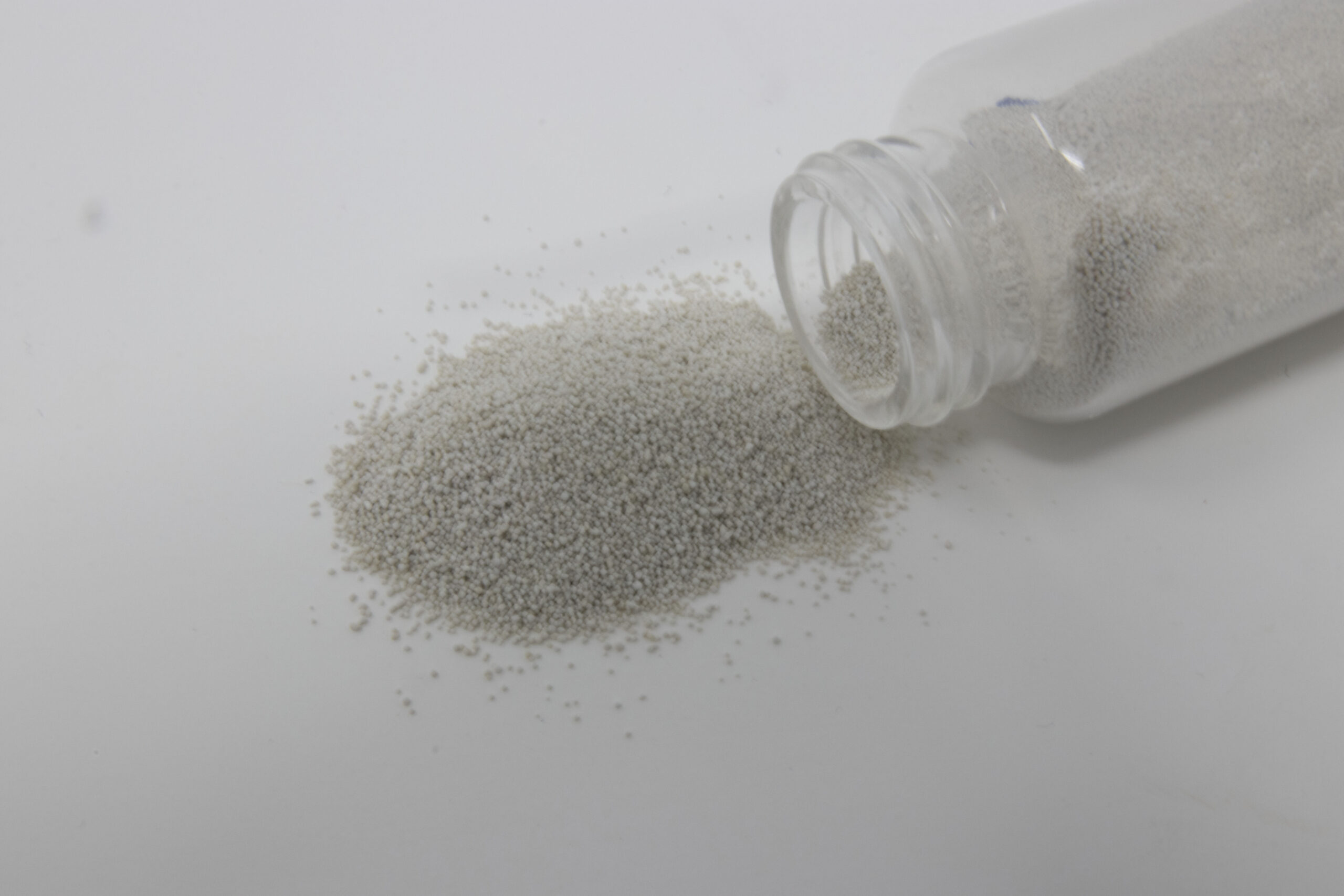
Delivery mechanisms influence product benefits
The animal production industry has long attempted to reduce its need for antibiotic drugs to an indispensable minimum. As a result, more natural and nature-identical feed additives have been used for preventive health maintenance. These categories include numerous substances that are known in human nutrition in the field of aromatic plants and herbs, or in traditional medicine as medicinal herbs.
The first available products of these phytogenic additives were simply added to compound feed. The desired parts of the plant were, like spices and herbs in human nutrition, crushed or ground into the premix. Alternatively, liquid plant extracts were placed on a suitable carrier (e.g. diatomaceous earth) beforehand in order to then incorporate them into the premix. These procedures are usually less than precise and may be responsible for the difficult reproducibility of positive results mentioned at the beginning.
Another negative factor that should not be underestimated is the varying concentration and composition of the active substances in the plant. This composition is essentially dependent on the site conditions, such as weather, soil, community and harvest time [Ehrlinger, 2007]. In an oil obtained from thyme, the content of the relevant phenol thymol can therefore vary between 30% and 70% [Lindner, 1987]. These extreme fluctuations are avoided with modern phytogenic additives through the use of nature-identical ingredients.
Effective encapsulation is key to stability
The loss of valuable phytomolecules under discussion can also be traced back to the natural origin of the raw materials. Some phytomolecules (e.g. cineole) are volatile even at low temperatures. In regular medicinal use, this effect is mainly employed with cold products. Thus essential oils, such as of mint and eucalyptus, can be added to hot water and inhaled via the resultant steam.
In the process of pelleting in compound feed production, temperatures between 60°C and 90°C are common, depending on the type of production. The process can last for several minutes until the cooling process is over. Sensitive additives can be easily inactivated or volatilized during this step.
A technical solution for the preservation of temperature-sensitive additives is using a protective cover. This is, for instance, an already established practice for enzymes. Such so-called encapsulation is already used successfully in high-quality products with phytogenic additives. The volatile substances should be protected by a coating with fat or starch so that the majority (>70%) of the ingredients can also be found after pelleting.
Unfortunately, complete protection is not possible with this capsule, as this simple protective cover can be broken open by mechanical pressure during grinding and pelletizing. New types of microencapsulation further reduce losses. In a sponge-like type of microencapsulation, if a capsule is destroyed, only a small proportion of the chambers filled with volatile phytomolecules are damaged.
High protection and recovery with Ventar D
A new type of encapsulation, developed by EW Nutrition for use in feed, delivers further optimization. Results show that the technology implemented in Ventar D ensures very high recovery rates of the sensitive phytomolecules even under demanding pelleting conditions.
In a comparative study with encapsulated products established on the market, Ventar D was able to achieve the highest recovery rates in all three tested scenarios (70°C, 45 sec; 80°C, 90 sec; 90°C, 180 sec). In the stress test at a temperature of 90°C for 180 seconds, at least 84% of the valuable phytomolecules were recovered, while the comparison products varied between 70% and 82%. A constant recovery rate of 90% was achieved for Ventar D under simpler conditions.
Phytomolecule recovery rates under processing conditions, relative to mash baseline (100%)
Site-specific release of active ingredients
The major gastrointestinal pathogens (like Clostridia spp., Salmonella spp., E. coli, etc.) are present across the gastrointestinal tract after the proventriculus. This leads to infection or lesions at different sites of preference, reaching up to ceca. Any feed-based solution should have a profound antimicrobial effect. It is, however, also crucial that active ingredients are released across the gastrointestinal tract, for a better contribution to intestinal health.
The unique, innovative delivery system used for Ventar D specifically addresses this point, which many traditional coating technologies do not. Other encapsulation technologies tend to release the active ingredient either too early or too late (depending on the coating composition). The active ingredients in Ventar D reach across sites in the gastrointestinal tract and exert antimicrobial effects, supporting optimal gut health and improving performance.
Economically and ecologically sustainable
In the past, the losses mentioned in compound feed production and especially in pelleting were described as largely unavoidable. To obtain the desired effect of the valuable phytomolecules in the finished product, higher use of products was recommended and thus increased costs to the end-users and the associated CO2 footprint, lowering sustainability overall.
The modern encapsulation technology used in Ventar D now offers significantly better protection for the valuable phytomolecules and, in addition to the economic advantage, also offers more efficient use of the resources required for production.
References
Hashemi, S. R .; Davoodi, H .; 2011; Herbal plants and their derivatives as growth and health promoters in animal nutrition; Vet Res Commun (2011) 35: 169-180; DOI 10.1007 / s11259-010-9458-2; Springer Science + Business Media BV, 2011
Ehrlinger, M., 2007: Phytogenic additives in animal nutrition. Inaugural dissertation. Munich: Veterinary Faculty of the Ludwig Maximilians University in Munich.
Lindner, U., 1987: Aromatic plants – cultivation and use. Contribution to the special show – Medicinal and Spice Plants (Federal Garden Show 1987), Teaching and Research Institute for Horticulture Auweiler-Friesdorf, Düsseldorf.



